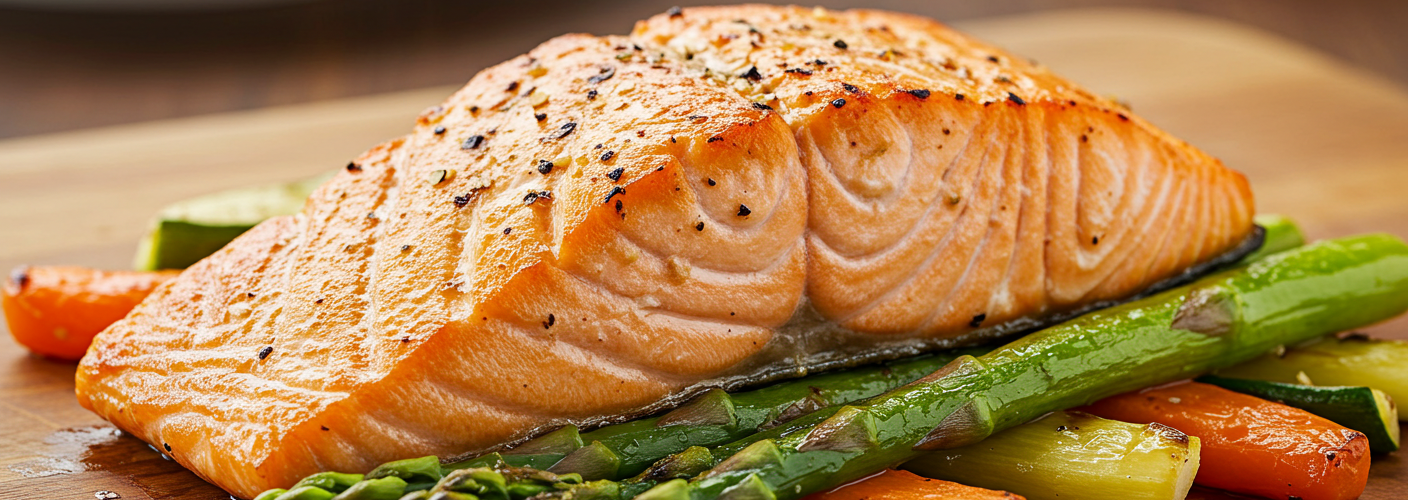When it comes to memorable meals, few can rival the experience of savoring grilled wild salmon. Not only is this dish a treat for the senses, but it also provides a range of health benefits and culinary versatility that makes it a favorite among seafood lovers and health-conscious individuals alike.
The Appeal of Wild Salmon
Choosing wild salmon over farmed options is largely about flavor and nutrition. Wild salmon, typically caught in the open waters of the North Pacific, boasts a richer, deeper taste that is unparalleled. Variants such as Sockeye, Coho, and King salmon all present unique flavors and textures. Additionally, wild salmon is packed with essential nutrients, including omega-3 fatty acids, high-quality protein, and a host of vitamins and minerals. These nutrients support heart health, brain function, and overall well-being.
Preparing Wild Salmon for Grilling
Grilling wild salmon can be a straightforward yet rewarding process. For the best results, start with fresh, high-quality salmon fillets. Look for vibrant, firm flesh without a fishy odor. You can ask your local fishmonger for recommendations or check labels if you’re purchasing from a market.
Before grilling, it can be beneficial to marinate the salmon for about 30 minutes. A simple marinade could include olive oil, lemon juice, fresh herbs like dill or parsley, garlic, salt, and pepper. This step enhances the flavor while keeping the fish moist during grilling. It’s important to remember that salmon cooks quickly, so patience and attention are key.
The Grilling Process
Preheat your grill to medium-high heat (about 400-450°F). If using a gas grill, you can easily control the temperature. For charcoal grills, lit coals should be arranged to allow for direct cooking. Once preheated, oil the grates to prevent the salmon from sticking.
For fillets, consider using a grilling basket or foil if you’re worried about flaking. Place the salmon skin-side down on the grill. Grill each side for about 4 to 6 minutes, but the exact time will vary based on the thickness of the fillets. A general cooking guideline is to allow 8 to 10 minutes per inch of thickness. The salmon is done when it flakes easily with a fork and has an internal temperature of 145°F.
Pairing and Serving Suggestions
One of the joys of grilled wild salmon is its versatility when it comes to sides and accompaniments. Grilled vegetables, such as asparagus, zucchini, or bell peppers, complement the dish beautifully. Alternatively, consider serving the salmon with a light quinoa salad or a creamy avocado dressing for added richness. A chilled white wine, like a Sauvignon Blanc, pairs beautifully with the subtle flavors of the salmon.
For a burst of freshness, you can top your grilled salmon with a mango salsa or a simple drizzle of balsamic glaze. This adds a delightful contrast that enhances the overall dining experience.
Conclusion
Grilled wild salmon is not just a meal; it’s an experience that brings together flavor, health, and the joy of cooking. Whether served at an intimate dinner party or a casual family barbeque, it promises to impress and satisfy. By choosing wild salmon and preparing it with care, you can elevate any dining occasion into something truly special. So fire up your grill and enjoy the delicious world of grilled wild salmon!




Add comment